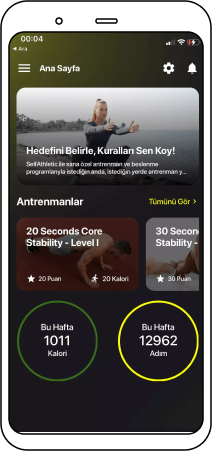<meta charset="UTF-8" /><meta name="viewport" content="width=device-width, initial-scale=1.0" /> <title>Conversion Optimization Training</title>
What is Conversion Optimization and Why is it Important?
Conversion Optimization is the process of improving a website to encourage visitors to take specific actions. These actions could include making a purchase, filling out a form, or signing up for a membership. The conversion rate reflects the percentage of visitors who achieve these goals, and increasing this rate directly impacts the success of digital marketing strategies.
The importance of Conversion Optimization lies in its ability to make better use of existing visitor traffic, thereby maximizing the return on marketing investments. Acquiring new visitors is typically more costly than converting existing ones into customers. Thus, optimizing existing traffic efficiently provides businesses with a critical advantage. Higher conversion rates enhance customer satisfaction and loyalty, contributing to long-term business success.
What Are the Key Methods to Increase Conversion Rates?
There are several key methods to boost conversion rates. First and foremost, improving user experience is essential. A user-friendly website with fast loading times and mobile compatibility encourages visitors to stay longer and take more actions.
Understanding your target audience and offering content and deals tailored to their needs is also a critical factor. By creating content that addresses your customers’ needs and expectations, you can capture their interest. At this stage, conducting A/B tests with different designs, texts, and offers allows you to identify which options are most effective.
Creating a strong and clear call-to-action (CTA) message is another vital way to increase conversion rates. Clearly directing visitors on what steps to take encourages them to act. Additionally, incorporating trust elements like customer reviews, security badges, and certifications can enhance your site’s credibility.
What Are the Most Effective Strategies for Conversion Optimization?
The most effective strategies for conversion optimization involve enhancing user experience, making data-driven decisions, and committing to continuous improvement. Start by ensuring your website is user-friendly, loads quickly, and works seamlessly on mobile devices. Enabling users to navigate comfortably and find what they need easily is a foundational step in boosting conversion rates.
Knowing your target audience well and offering personalized content that meets their expectations is crucial. This is key to engaging visitors and prompting action. Personalized messages and offers make customers feel valued, increasing conversions.
A/B testing is an indispensable part of conversion optimization. By testing different designs, messages, and call-to-action (CTA) elements, you can pinpoint which perform best. This helps you understand what works and facilitates ongoing improvements.
Building trust is also a significant factor. Social proof such as customer reviews, certifications, and security badges helps gain visitors’ confidence. People prefer transacting in a trustworthy environment, so leveraging these elements boosts conversion rates.
Regularly analyzing data to identify areas for improvement is essential. Tools like Google Analytics allow you to monitor user behavior and base your strategies on this data.

Why is Improving User Experience Important in Conversion Optimization?
Conversion optimization refers to strategic improvements aimed at increasing the actions you want users to take on a website. This process enhances user experience, strengthens visitors’ connection to your site, and ultimately boosts conversion rates. Here’s why improving user experience is vital in conversion optimization:
User-Centric Approach: Conversion optimization requires understanding users’ needs and expectations. This improves their experience from the moment they arrive, offering a smoother and more satisfying journey. Exceeding expectations leads to longer visits and more conversions.
Usability and Accessibility: Ensuring users can navigate your site easily and access information quickly is a core goal of conversion optimization. A well-designed site captures attention and encourages users to complete desired actions without leaving. This is crucial for increasing sales and customer satisfaction.
A/B Testing and Data Analysis: In conversion optimization, A/B tests evaluate different design and content options to determine what works best. These tests and data analyses enable data-driven decisions and continuous improvement for optimal results.
Trust and Reliability: User trust directly impacts conversion rates. Conversion optimization emphasizes trust elements (e.g., SSL certificates, customer reviews, security badges) to boost confidence. A reliable site increases the likelihood of purchases or form submissions.
Speed and Performance: Website speed significantly affects conversion rates. Fast-loading pages reduce bounce rates and encourage more interaction. Conversion optimization improves user experience and conversions by minimizing load times.
Conversion optimization doesn’t just increase sales—it also enhances user loyalty and satisfaction. Improving user experience fosters long-term customer retention and supports sustainable business growth. Our conversion optimization training helps you learn how to apply these strategies effectively, taking your business to the next level.
How Can You Increase Conversion Rates by Analyzing the User Journey?
Analyzing the user journey to boost conversion rates is a key aspect of digital marketing strategies. Understanding how users interact with your site and optimizing these interactions can significantly elevate conversions. Start by mapping the user journey to examine the paths visitors take in detail. This mapping reveals the stages they go through and where they encounter difficulties, allowing you to identify and address disruptions in their experience.
During user journey analysis, collecting and interpreting data plays a critical role. Tools like Google Analytics, heatmaps, and user surveys help track behavior, showing which pages are most visited, where users drop off, and which content drives engagement. This data provides insights into user preferences and needs, guiding you on how to direct them effectively.
A/B testing is an effective method for optimizing the user journey. Testing different design and content variations lets you see what performs best, enabling data-driven adjustments. For example, changing a button’s color or placement can reveal its impact on conversions.
Analyzing the user journey also helps improve site speed and performance. Slow pages can lead to abandonment, so optimizing load times enhances user experience and boosts conversions. Building trust is another key factor—highlighting trust elements (e.g., SSL certificates, reviews, security badges) increases user confidence.
How to Perform Conversion Optimization with A/B Testing?
A/B testing is one of the most effective methods in conversion optimization. It compares different elements of your site to determine which version delivers higher conversion rates. Here are the steps to perform conversion optimization with A/B testing:
First, identify the element you want to test—such as a button’s color, headline, image, or form placement. Focus on areas you believe could significantly impact conversion rates.
Next, create two versions: Version A (control) and Version B (variation). Only the element being tested should differ between them. For instance, if Version A has a green button, make it red in Version B to isolate the variable and obtain clear results.
Then, split your traffic evenly between the two versions to show them to equal numbers of users. This ensures an objective measurement of their impact. A/B testing tools automate this process and collect data for you.
Monitor conversion rates and related metrics throughout the test period. This data reveals which version performs better. Tests typically run for a few weeks to gather sufficient data, ensuring statistically significant results and avoiding misleading conclusions.
After analyzing the results, select the winning version and implement it on your site. If Version B outperforms Version A, make it permanent. However, remember that this is an ongoing cycle—continuously test new elements to keep improving conversion rates.
A/B testing enables data-driven decisions in conversion optimization, far more reliable than guesswork. Our training teaches you how to plan, execute, and analyze A/B tests in detail, equipping you with the skills to boost conversions and elevate your site’s performance.
The Conversion Funnel: The Art of Turning Visitors into Customers
The conversion funnel plays a critical role in transforming visitors into customers. It represents the stages from a potential customer’s first interaction with your site to completing a desired action, such as a purchase. The funnel helps identify obstacles and opportunities at each stage, enabling you to optimize the process and increase conversion rates.
The first stage is awareness. Here, making potential customers aware of your brand is key. Use channels like social media, SEO, content marketing, and ad campaigns to reach your audience. Offer engaging, valuable content to attract attention and drive traffic to your site.
The second stage is interest and engagement. Once visitors arrive, captivate them with a user-friendly design and meaningful content. Collecting and analyzing data to understand their needs and expectations is vital. Tools like heatmaps, surveys, and reviews help you study behavior and pinpoint areas for improvement.
The third stage is decision and evaluation. Support visitors’ decision-making by building trust. Highlight trust elements, offer testimonials, and clearly explain your product or service benefits. Tools like comparison charts or free trials can simplify their choice, encouraging conversions without abandonment.
The final stage is conversion and loyalty. Turning visitors into customers isn’t the end—focus shifts to satisfaction and retention. Personalized experiences encourage repeat purchases and referrals. Staying in touch via newsletters or special offers helps turn customers into loyal advocates.
Effectively managing and optimizing the conversion funnel is vital for business growth. Our training teaches you how to develop strategies for each stage, analyze data, and enhance user experience, mastering the art of turning visitors into customers.
Ways to Maximize Conversion Rates on E-Commerce Sites
Maximizing conversion rates on e-commerce sites requires focusing on user experience (UX) and usability. A simple, clear menu structure ensures users can navigate easily and find what they need. Fast loading times and mobile compatibility also play critical roles in boosting conversions. Trust and security are non-negotiable—customers prefer sites they feel safe sharing personal and financial information with. Include security certificates (SSL), customer reviews, and a transparent return policy. High-quality, detailed product descriptions and visuals positively influence purchasing decisions, building trust by presenting products clearly and attractively. Finally, personalized offers and retargeting strategies deliver relevant campaigns, enhancing loyalty and maximizing conversion rates.
What Results Can You Achieve with Successful Conversion Optimization Training?
Successful conversion optimization training can significantly enhance your e-commerce business’s performance and profitability. It teaches you to improve user experience, turning visitors into customers with effective strategies. You’ll learn to analyze user behavior and make data-driven adjustments, keeping visitors engaged and helping them find what they need effortlessly.
The training also covers methods like A/B testing to identify the most impactful design and content changes, enabling continuous improvement. You’ll develop personalized marketing strategies to offer tailored deals, boosting customer loyalty. Focusing on trust and security strengthens confidence, driving more sales.
Another key outcome is increased effectiveness of digital marketing campaigns. You’ll better understand your audience and learn the best ways to reach them, maximizing ROI on ad spend. Ultimately, this training boosts your site’s performance and revenue, fueling business growth.
Reach Your Goals with Analytical Methods Learned in Training
The analytical methods offered in Conversion Optimization training provide a major advantage in achieving your goals. You’ll learn effective strategies to understand customer behavior and optimize site performance. Techniques like A/B testing and data analytics help you identify what boosts conversion rates.
More importantly, these methods allow you to use marketing budgets efficiently, directing ad spend for maximum impact. By the end of the training, you’ll not only achieve higher conversion rates but also increase customer satisfaction, securing long-term success.
Taking this training as a conversion optimization expert unlocks exponential performance potential. The knowledge and skills gained set a strong foundation for both current and future success. I highly recommend this training to anyone looking to boost conversions and elevate their business.



















